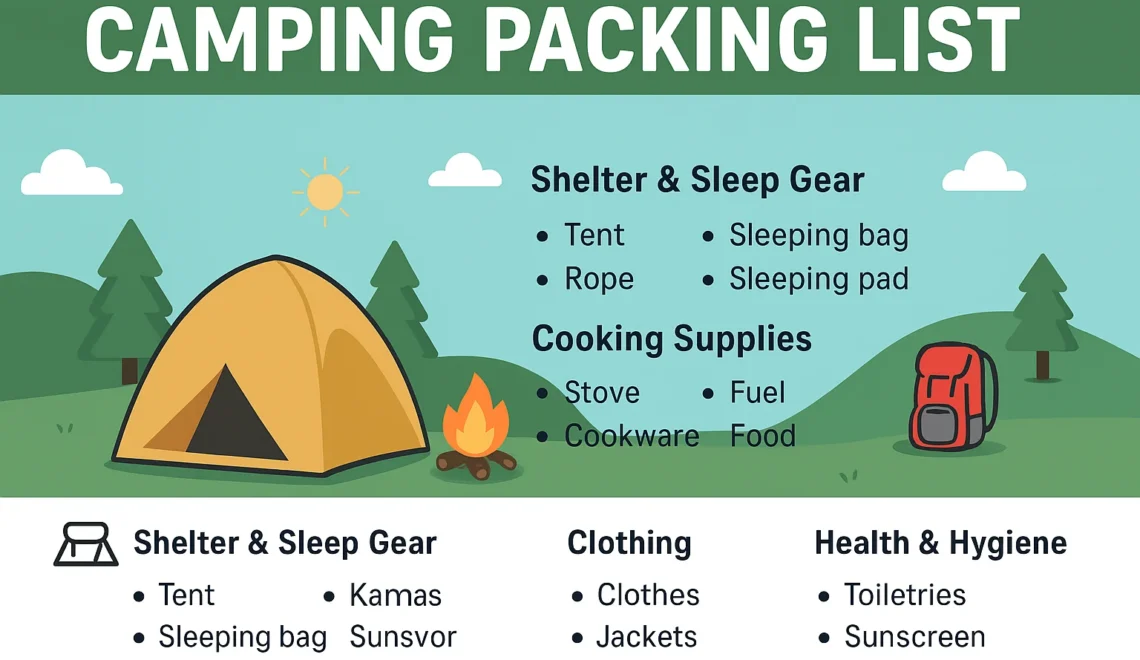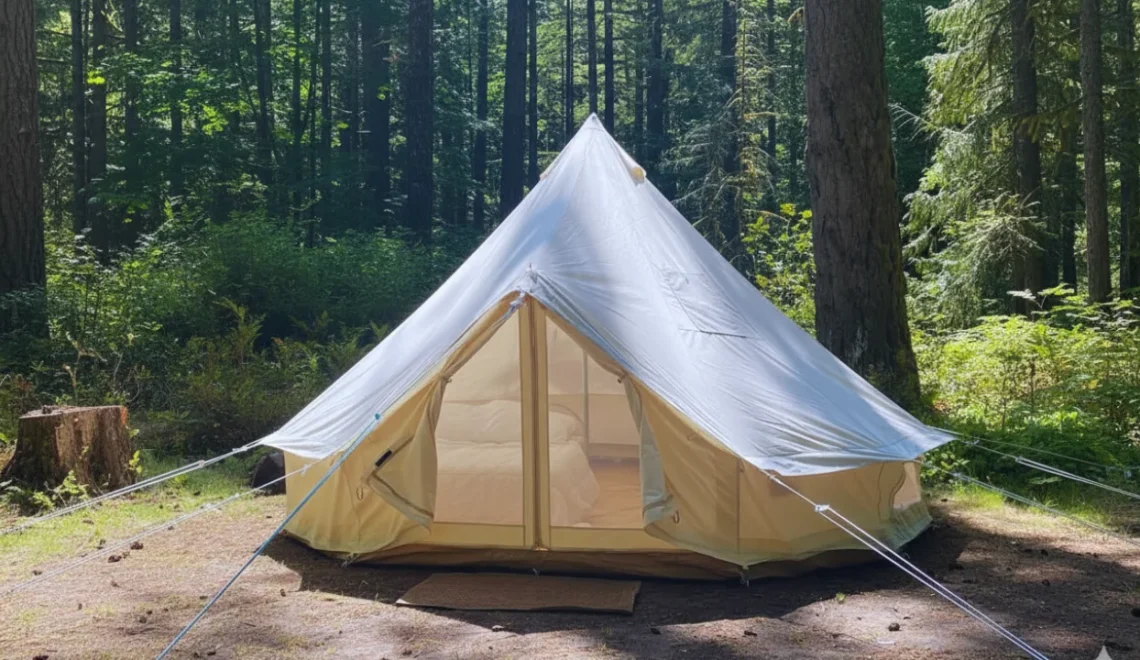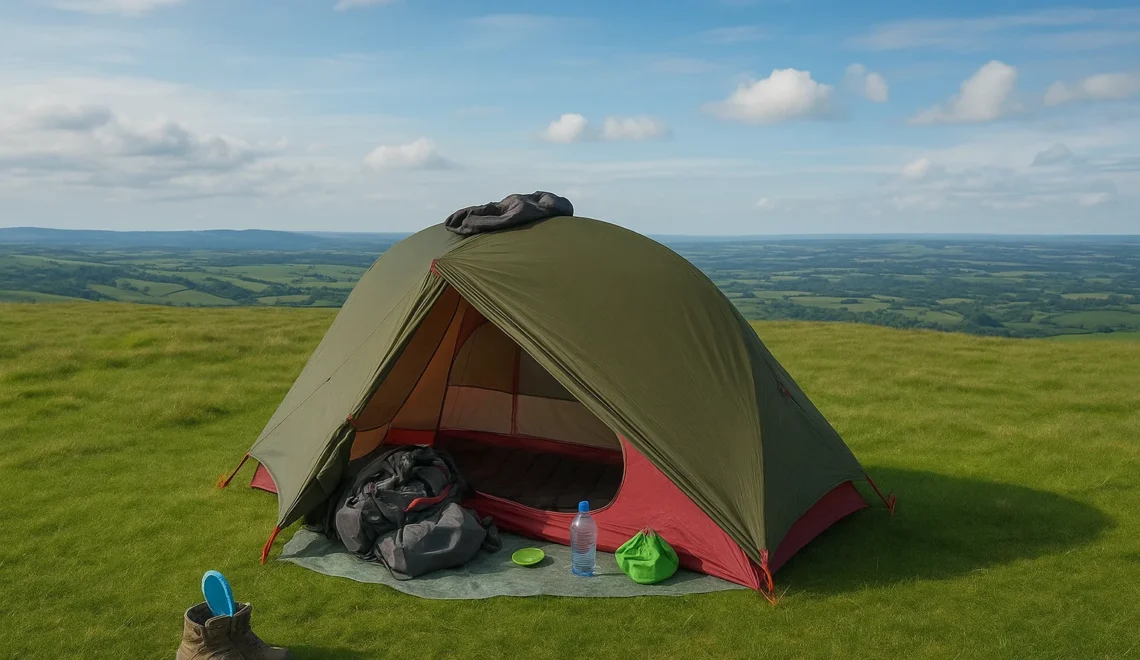
Ultimate Camping Packing List for Powerful Trips
When I first started camping, I quickly realized how much fun it is to enjoy the outside world with family, friends, or even by yourself. There are myriad ways and places to make each adventure special—whether you set up a tent in state or national parks, choose private campgrounds, explore the backcountry, or even enjoy your own backyard. Every campsite has its charm, from a picnic table near a park to running water and shared bathrooms that make life comfortable and convenient. I always bring my camping essentials—blankets, pillows, and a hammock—to make my space feel homey and welcoming after a long day outside. Using a camping packing list helps me stay organized and remember every important item, making each trip smooth and stress-free.
Over time, I’ve learned that a handy checklist helps me remember every important item before I pack. Whether you’re a first-time camper or an experienced one, it’s smart to create a comprehensive packing list that fits your style, climate, and weather conditions. You can borrow or rent some equipment if needed, but always make sure your supplies are stocked and ready. From adventurous trips in the backcountry to peaceful nights around a campfire, the goal is to spend time comfortably, no matter the location or length of your stay. Whether you’re pitching a rugged tent or loading your vehicle for a weekend away, the right gear ensures your camping experience stays smooth and memorable.
The Camping Essentials
When preparing for a camping trip, the items you pack are often dependent on the type of adventure you prefer and the climate or conditions you’ll face. From years of outdoor experience, I’ve learned that smart packing is all about balance—choosing what you truly need while keeping things simple and comfy. Every trip feels different depending on where you go and who you travel with, so having flexible lists ready for various categories helps make everything smoother once you’re out in nature.
In my own packing routine, I separate my must-haves and optional gear before every camping getaway. The must-haves are the essentials I can’t go without—things that handle all conditions and keep the trip stress-free. The optional ones are small comforts that turn a basic setup into a cozy outdoor retreat. Whether you’re heading into the woods or camping by a lake, understanding what’s truly dependent on your location and climate can completely change how comfortable your experience feels.
Camping Gear
Getting the right camping gear can completely change how your campsite feels—from setup to relaxing by the campfire. I like to outfit my space with a sturdy tent, secure stakes and poles, and a rainfly for unexpected weather. My checklist always starts with the basics: a sleeping bag, pads, and a pillow for comfort. I never forget my lanterns (both battery and propane powered), headlamps, or flashlight since light is everything after sunset. When hiking to a new spot, I pack my backpack with maps, a compass, and a portable GPS—those have saved me more than once.
Over the years, I’ve learned that even optional items can make a big difference. A tarp or ground cover keeps things waterproof, while a camping table and chairs make meals easier. For comfort, I sometimes hang a hammock under the sunshade or canopy, especially when I camp near water. My bag also carries Firestarter, matches, and firewood, along with extra batteries and a lantern stand with a carry case. I even keep a few safety must-haves like an emergency whistle, bear horn, and fire extinguisher. Small touches—like a rug, tablecloth, clips, and clothesline—help make the space feel more like home, especially when every piece of gear is chosen with care and purpose.
Camping Sleep Setup
One of my favorite moments while camping is getting ready to sleep under the stars, wrapped in the quiet calm of the night. A good bedding setup makes all the difference in how comfortable you feel. My must-haves always include a warm sleeping bag and a soft pad to cushion the ground. If I want a little extra comfort, I bring an air mattress and a pump, especially for longer trips. I’ve found that investing in water resistant materials keeps everything dry even when morning dew settles in, and it helps your blanket or pillows stay fresh throughout the trip.
I like to keep a few optional items ready, too, depending on the weather and location. A hammock is perfect for lazy afternoons, while a cot gives better back support when the ground feels too rough. Small touches like sleeping bag liners add warmth on cooler nights, and stuff sacks keep my bedding organized inside the tent. Over time, I’ve realized that creating a cozy camping sleep area isn’t about luxury—it’s about choosing the right pieces to make your outdoor rest as relaxing as possible.
Camping Kitchen & Cooking
Setting up a camping kitchen is one of my favorite parts of trip prep—it’s where comfort and creativity meet. With the right gear, cooking outdoors becomes simple and enjoyable. I always start with a solid checklist to make sure I don’t miss anything. My stove, camp sink, and fuel (with a funnel) are must-haves, while my grill and frying pan handle most meals. A few seasonings, drinks, and easy-to-pack food items keep things interesting. I like using durable cookware and utensils, along with plates, bowls, and mugs made of crack-resistant, reusable plastic instead of paper. A knife, cutting board, and thermometer always come in handy for meal safety and precision. For cleanup, I rely on biodegradable dish soap, a sponge, a brush, and towels—and never forget trash bags, food storage containers with lids, and water jugs to stay organized.
Over the years, I’ve added a few luxuries to my setup. An insulated cooler and ice packs keep everything fresh, while an outdoor griddle or Dutch oven helps me get creative. My coffee maker and tea setup make mornings feel like home. I even pack s’mores sticks, an egg carrier, and bear canisters when needed. Small details like a tablecloth, clips, and foil make prep easier, and a portable grill rack or charcoal helps with smoky evening meals. After cooking, I use a pot scrubber, recycling bags, and bins to store gear neatly. Every part of my camp kitchen is chosen to make cooking outside feel just as natural as it does at home—only with better views and fresher air.
Outdoor Clothing & Footwear
When it comes to camping, the right outdoor clothing and footwear can make every adventure more enjoyable. I always follow a few simple guidelines when packing for different activities and weather. During the day, I wear moisture-wicking shirts and underwear—I personally like ExOfficio for comfort and breathability. A lightweight jacket or fleece works great for layering, especially when the temps drop at night. For hiking, sturdy boots or shoes suited to the terrain are a must, and I keep a pair of socks made from synthetic or wool to stay dry. When it’s hot, I switch to quick-dry pants or shorts and sometimes pack a swimsuit and water sandals for river crossings or swimming spots.
Cold or rainy days call for different gear. I always bring rainwear like a rain jacket, coat, or Marmot shell for protection. In winter or snow, I layer with an insulated vest, mittens, and a warm hat or shade hat depending on the conditions. Simple extras like gloves, bandanas, or booties add comfort, while a clothesline and pins help dry clothes after a wet day. I even keep a small radio with a weather band to stay updated during changing conditions. At camp, I slip into in-camp sandals or soft shoes to rest my feet—because staying comfortable from sunrise to night is what keeps every camping trip enjoyable and worry-free.
Camping Tools
Every camping trip becomes easier when you have the right tools ready for both setting up and breaking down your campsite. I always keep a compact tool set that includes essentials like a sturdy shovel, an ax, or a saw for gathering firewood. A rope, a few bungee cords, and even a 550 parachute cord or wire can be lifesavers for hanging tarps or securing gear. My multi-tool and multipurpose knife stay within reach—they’re small but handle everything from cutting rope to opening food packets. For smaller tasks, I pack a trowel for digging and a broom, dust, and a pan to keep the campsite clean.
I also bring backup items in case something breaks. A tent repair kit, tent-pole sleeve, and duct tape have saved my setup more than once, especially after windy nights. My mallet or hammer helps with tent stakes, while a pad or mattress repair kit fixes any leaks quickly. I even tuck in a survivalist handbook for reference and keep an extra cord in the bag—just in case. Little things like a small dustpan may seem unimportant, but when you’re miles from home, every piece of camping gear in your tool set earns its place.
Campsite Comfort & Extras
When setting up your camping spot, a few thoughtful extras can make your trip smoother and more enjoyable. I always pack solar lights and a portable power bank to keep things running when the sun sets. A small GPS, map, and compass are part of my navigation tools—they’re part of the Ten Essentials every camper should have, especially if you wander far from the main trail.
In the evenings, I love watching the sky with binoculars and a star chart or night-sky identifier—it’s a peaceful way to wind down. When I’m relaxing, a book, reading material, or music player with headphones helps me slow the pace. Games and toys also keep both adults and kids entertained at the campsite, and don’t forget your dog gear if you’re camping with pets.
For keeping gear tidy, dry bags, stuff sacks, and clear plastic bins are perfect for storing items neatly and protecting them from moisture. It’s also smart to think about camping hygiene. I always carry toiletries and accessories like sunscreen, bug spray, sunglasses, a first aid kit, toilet paper, hand sanitizer, a toothbrush, toothpaste, a hairbrush, and a comb. Using degradable soap helps protect nature, and towels and lip balm are simple comforts that make a big difference.
For longer trips, I include a urinal and menstrual products to stay prepared for all conditions. A few extras like cards, a watch, shampoo, conditioner, books, earplugs, and even a portable shower make camp life more pleasant. At night, citronella candles keep bugs away while adding a soft glow to the tent area.
Campsite Comfort & Extras
A well-packed camping trip feels effortless when you bring the right extras. I always rely on solar lights and portable power to keep things running after dark. Good navigation tools like a map, compass, or GPS—part of the Ten Essentials—help me stay safe when exploring off-trail. During quiet moments, I enjoy using binoculars or field guides to spot flowers and insects, or simply gaze up with a star chart or night-sky identifier. To unwind, a book, reading material, music player, and headphones help pass the time, while games, toys, and dog gear keep everyone entertained, especially kids.
Keeping the campsite tidy is easier with dry bags, stuff sacks, and clear plastic bins to store items neatly. Staying clean is just as important—pack toiletries, accessories, and hygiene must-haves like sunscreen, bug spray, sunglasses, first aid kit, toilet paper, hand sanitizer, toothbrush, toothpaste, hairbrush, comb, degradable soap, towels, and lip balm. For longer stays, bring a urinal, menstrual products, shampoo, conditioner, and a portable shower to stay prepared. Add small comforts like cards, a watch, earplugs, books, and citronella candles to make every night feel cozy and calm.
Health & Hygiene Essentials
Keeping yourself fresh and healthy while camping makes the whole trip much better. I always pack toilet paper, hand sanitizer, a toothbrush, and toothpaste in a small toiletry kit that’s easy to reach. A quick-dry towel is great because it dries fast after a portable camp shower. Don’t forget menstrual products, prescription medications, and a compact first-aid kit with essential supplies—I like checking mine off a personal checklist before every trip. It’s smart to bring sunscreen, sunglasses with straps, and a sun hat to stay safe under the sun. I also keep lip balm close by, especially during windy days.
In the wild, a bit of preparation goes a long way. Use insect repellent or an insect repellent device to keep bugs away. If your campsite has no toilets, carry a urinary sanitation trowel for hygiene. Baby wipes, alcohol or antiseptic wipes, and a small mirror can make cleaning up easier. I never skip packing a brush, a comb, and a few cosmetics for comfort. For extra care, toss in spare eyeglasses, contact lens supplies, eye shades, and earplugs for quiet nights.
FAQs about Camping Packing List
1. What should I pack first for a camping trip?
Start with the essentials — your tent, sleeping bag, cooking gear, first-aid kit, and weather-appropriate clothing. These form the foundation of any reliable camping packing list.
2. How can I keep my camping gear organized?
Use clear plastic bins or stuff sacks to separate items by category, such as kitchen tools, clothing, and toiletries. Label each container to make unpacking and repacking easier.
3. Do I need different items for summer and winter camping?
Yes. In summer, focus on sun protection, insect repellent, and hydration gear. For winter, pack insulated clothing, extra layers, and cold-weather sleeping pads to stay warm.
4. What are some optional but useful camping extras?
Extras like a hammock, camp rug, portable coffee maker, or solar power bank can add comfort and convenience without taking up much space.
5. How do I make sure I don’t forget anything?
Create a personal camping checklist and review it before leaving. Check off each item as you pack—this small step ensures you don’t overlook important gear like matches, flashlights, or batteries.
Conclusion
Packing smart for your camping trip makes all the difference between a stressful outing and a relaxing adventure. A well-thought-out camping packing list ensures you have all the essentials — from shelter and sleep gear to cooking tools, clothing, and hygiene items. Take time to organize, check, and customize your list based on the weather and location. With the right preparation, you can focus less on what you forgot and more on enjoying nature, fresh air, and the peaceful rhythm of life outdoors.



